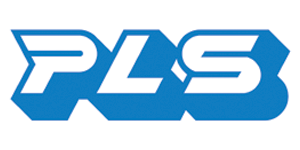Off-site Installation SOP
Here are some SOPs to help with off-site installs:
1- Pre-Installation Preparation:
-Review the installation requirements provided by the client with the Operations Manager.
-Ensure all necessary hardware, software, tools, and documentation are available and in working condition.
-Prepare & Bag the proper tools, accessories and equipment for the install.
-Communicate with the client to confirm the installation schedule, site access, and any specific requirements or restrictions.
-Conduct a video call if possible to insure the customer has the site ready for PLS.
2- Site Assessment:
-Conduct a thorough assessment of the installation site to identify any potential challenges, hazards, or environmental factors that may affect the installation process.
-Verify that the site meets the technical specifications and requirements specified for the installation.
-Use the Hardware List to make sure customer received everything and report your findings to Operations Manager ASAP.
3- Equipment Setup:
-Set up the necessary equipment, including hardware components, peripherals, and networking devices, according to the installation plan.
-Test each component to ensure functionality and compatibility with existing systems or infrastructure.
4- Software Installation and Configuration:
-Install and configure the required software applications or operating systems according to the respective POS System specifications and preferences.
-Verify proper installation and functionality of software, drivers, and updates by doing POS tests
5- Hardware Installation:
-Install hardware components such as servers, workstations, routers, switches, hardware and peripherals in their designated locations.
-Ensure proper cable management and connectivity between devices.
6- Testing and Quality Assurance:
-Conduct comprehensive testing of the installed hardware and software to identify any issues, errors, or compatibility issues.
-Perform functionality tests, stress tests, and integration tests to validate the performance and reliability of the installation.
7- Documentation and Reporting:
-Document all installation activities, including equipment setup, configuration changes, test results, and any issues encountered during the process.
-Prepare a detailed installation report summarizing the installation process, findings, recommendations, and next steps.
-Provide the installation report to the client for review and approval.
8- Client Training and Handover:
-Provide training to the client’s staff on the operation, maintenance, and troubleshooting of the installed systems or software.
-Review key features, functionalities, and best practices to maximize the value of the installation.
-Obtain sign-off from the client acknowledging the completion of the installation and acceptance of the delivered solution.
9- Post-Installation Support:
-Inform the customer that we Offer ongoing technical support and assistance to the client to address any questions, issues, or concerns that may arise after the installation.
-Document and escalate unresolved issues to the Operations Manager support teams for further investigation and resolution.
10- Post-Installation Clean-up
-Ask the customer where can we dispose the trash and if they would like to save the Hardware Boxes.
-Gather, pack all PLS tools, extra accessories and equipment used for the install.
-Dispose any trash and clean up after your mess (VIP).
-Take as many detailed pictures as possible to insure proper installation procedures and for proof.
-Email pictures and notes to dnodes@plsusa.com and copy gerson@plsusa.com as well as rsweiss@plsusa.com
-Bring PLS tools, extra accessories and equipment back to office and clean/store them for the next install job.
